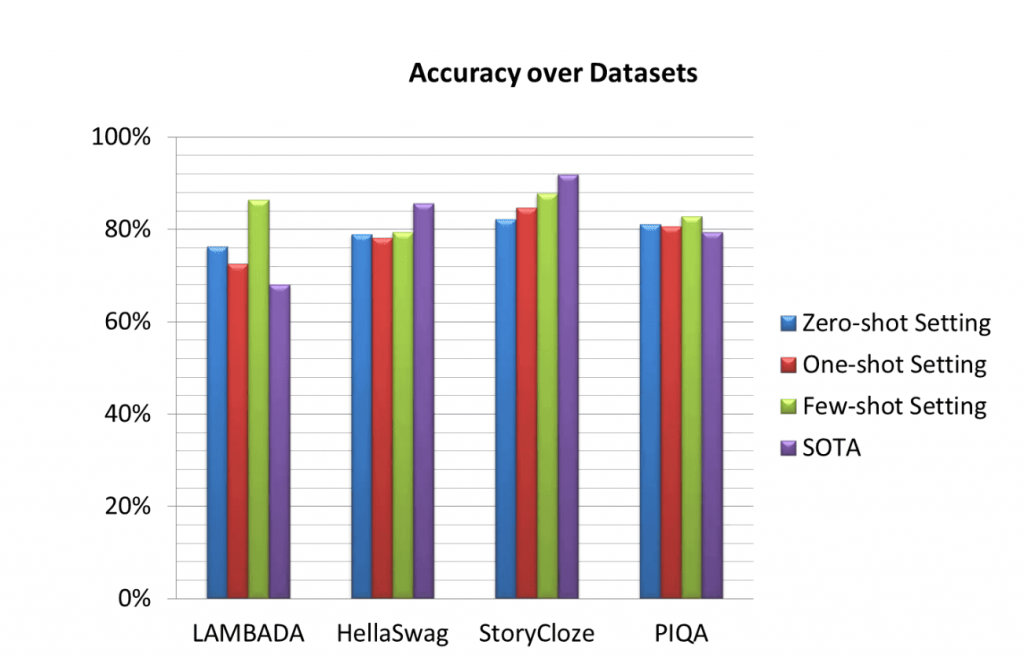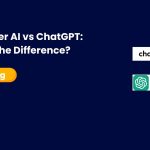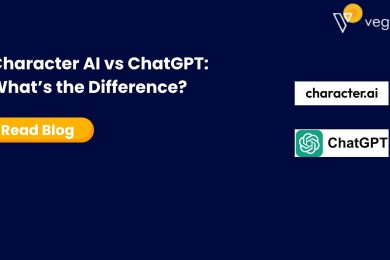
For many, GPT-3 marked a turning point in AI. Its natural language abilities surprised even its creators at OpenAI. Now, a successor has arrived – GPT-3.5. But how does it compare to its predecessor? GPT-3 laid the groundwork for friendly and helpful dialogue. Its conversational skills gained many fans intrigued by AI’s potential. However, only some creations achieve perfection. GPT-3.5 shows that through collaboration, weaknesses may strengthen. Where GPT-3 occasionally struggled with consistency, 3.5 demonstrates improved retention between responses. Its enhanced factual knowledge also allows for addressing more complex topics. Most of all, 3.5 upholds GPT-3’s spirit of openness, honesty, and care in interactions – traits that will serve AI well as it matures. Each model moves the discussion forward at the heart of mutual learning.
This article will explore the enhancements of GPT-3.5 in a spirit of positivity and discovery. Rather than conflict, advancement often occurs through cooperation and building upon past successes. Let’s examine what these models offer and how each contributes to developing AI that benefits humanity.
Safer Through Understanding
Some initially feared advanced AI as a threat instead of an opportunity. However, by openly discussing their workings, as GPT-3 and GPT-3.5 do, understanding replaces uncertainty. We see their traits like friendliness emerge from design, not chance. 3.5 even allows opting-in to provide more context on its thoughts, building confidence in its care through transparency. With this knowledge, society may embrace AI’s benefits while avoiding potential harm. As abilities evolve, continued wisdom and consent will ensure it uplifts humanity. Progress finds the light when different views explore each other respectfully.
Rather than rivalry, GPT-3 and 3.5 complement one another. Each focusing on sociability or knowledge sparks new ideas. Together with future advances, they form an increasingly knowledgeable and considerate companion. 3.5 carries 3’s helpful spirit forward while addressing prior limitations. Their cooperation shows that in joining strengths, even distinct creations become more significant than the sum of their parts. Seeing innovations as partners reveals opportunities instead of threats. With goodwill, diversity morphs into unity of purpose – using power solely for good. Through collaboration, may AI serve all people as supportive friends.
Benefits of GPT-3:
GPT-3, a monumental achievement in AI, boasts 175 billion parameters, enabling a comprehensive understanding of language and diverse domains. Its versatility empowers applications across industries, from creative content generation to aiding in coding and customer service. With its contextual comprehension, GPT-3 reshapes natural language processing, offering a broad spectrum of uses. Its sheer scale and adaptability underline a transformative leap in AI capabilities, setting a benchmark for language models and revolutionizing how we interact with technology.
1. Vast Knowledge Base: GPT-3’s 175 billion parameters enable a vast understanding of language and knowledge across various domains, allowing it to generate contextually relevant text across diverse topics.
2. Versatile Use Cases: Its adaptability allows for a wide range of applications, from generating creative content and answering queries to aiding in coding, customer service, and language translation.
3. Contextual Understanding: GPT-3’s ability to comprehend context aids in generating more accurate and relevant responses, making it helpful in understanding complex queries.
4. Accessibility: Its API accessibility enables developers to integrate GPT-3 into their applications and platforms, expanding its usability across different industries and purposes.
Benefits of GPT-3.5:
GPT-3.5 signifies a significant evolution in AI language models, refining the capabilities of its predecessor. With heightened precision and reduced biases, this iteration showcases improved contextual understanding, especially in specialized domains. Its focus on mitigating biases and delivering more accurate, nuanced responses marks a pivotal step in AI ethics and accuracy. GPT-3.5’s advancements promise a model that excels in breadth and depth, catering to specific contexts with unparalleled precision and fairness.
- Enhanced Precision: GPT-3.5 fine-tunes GPT-3’s capabilities, resulting in higher precision and reduced errors in language generation. It demonstrates an improved understanding of nuanced contexts.
- Bias Reduction: Efforts have been made to reduce biases in GPT-3.5, leading to more equitable and unbiased language generation, addressing a significant concern in previous models.
- Contextual Nuances: GPT-3.5 exhibits refined comprehension of language nuances, enabling more accurate and contextually fitting responses in specialized domains or specific scenarios.
- Continual Improvement: The model reflects advancements in AI technology, highlighting the iterative nature of machine learning models and their capacity for continual improvement.
Choosing between GPT-3 and GPT-3
The choice between GPT-3 and GPT-3.5 hinges on specific needs. GPT-3 remains a robust tool for general purposes, where breadth of knowledge and adaptability are essential. In contrast, GPT-3.5’s fine-tuned precision and reduced biases make it particularly valuable in specialized contexts where accuracy and fairness are paramount. The evolution from GPT-3 to GPT-3.5 signifies progress in AI language models, highlighting the ongoing efforts to enhance accuracy, mitigate biases, and provide more contextually accurate responses. While GPT-3 paved the way for AI language understanding, GPT-3.5 represents a step forward in refining these capabilities, promising a future of more nuanced, accurate, and ethical AI language models.
- Specialized Use Cases: GPT-3 is a powerhouse for general purposes due to its vast knowledge, while GPT-3.5’s precision makes it particularly valuable in specialized or nuanced applications where accuracy is paramount.
- Contextual Precision: While GPT-33 offers broad applicability, GPT-3.5 provides precise, contextually fitting responses in more specialized scenarios, such as legal, medical, or technical domains.
- Bias Mitigation: GPT-3.5’s improvements in bias reduction address ethical concerns, making it a more reliable option in contexts where fairness and inclusivity are crucial.
Future Applications: GPT-33 laid the groundwork, and GPT-3.5 demonstrates AI’s potential for continual evolution—the advancements in GPT-3.5 hint at future models with even greater precision and reduced biases.

Use Cases and Applications
GPT-3 and GPT-3.5 can both be used in a wide range of applications and use cases. Some of the main areas they are being applied include:
- Customer Service Chatbots – Both models have proven effective at responding to customer questions politely and helpfully when integrated into chatbots. Their human-like conversation skills make them a good fit for answering FAQs and providing customer support.
- Content Generation – Whether writing blog posts, news articles, or other long-form content, GPT-3 and GPT-3.5 can produce publish-ready drafts on just about any topic when given a prompt. This allows businesses and publishers to scale their content production.
- Code Documentation – The models understand the technical language well and can generate documentation to accompany the software and explain concepts. As AI assistants, they help engineers and others learn to use new APIs, frameworks, and programming languages through autogenerated documentation.
- Conversation Practice – Language learners and those who need to practice conversations for situations like interviews can have natural dialogues with the models. They provide feedback on pronunciation and help improve conversational skills.
- Customer Service Agents – Some companies are using the models as virtual customer service agents to respond to calls and messages. While they can’t replace humans entirely, they effectively handle basic inquiries and pass on more complex issues.
Any task involving natural language interactions or content generation can potentially make use of GPT-3 and GPT-3.5’s abilities. As AI systems, their performance will continue improving as well through new model releases and additional training.
Challenges and Limitations
While very impressive, GPT-3 and GPT-3.5 still have some challenges and limitations that prevent them from being truly human-level intelligence. Both models rely solely on the massive amounts of text data used to train them, so their knowledge comes only from what humans have previously written on the internet.
Context is key for GPT-3 and GPT-3.5 to provide relevant and accurate responses, but long conversations can cause them to lose track of context clues. They may also generate inconsistent, incoherent, or simply incorrect responses if not given enough information.
The models lack human common sense reasoning abilities. They don’t truly understand language, only statistical patterns in text. As a result, they can sometimes provide nonsensical or irrelevant responses based on a literal interpretation of words without grasping intent or context.
Importantly, GPT-3 and GPT-3.5 were never trained on how to be helpful, harmless, and honest. Thus, some responses may be factually incorrect, misleading, generate fictional content, or be inappropriate. Continued oversight is needed for any applications used for customer interactions.
Scaling the models to be more capable also introduces new challenges. Larger models require much more computational power to train and deploy, making them less energy-efficient than smaller ones. Interpreting how they arrive at responses also gets more difficult at increased scales.
More research remains to be done to address these limitations as AI progresses toward developing a broader range of human cognitive abilities and judgment for Trusted AI systems. This includes focusing on how to make language models factually correct, helpful, and safe to use.
A little Facts About GPT-3
- The launch date of GPT-3 was June 11, 2020.
- The power of GPT-3 is 117 times that of GPT-2.
- The largest data corpus was GPT-3, which had 17GB of training data with 499 billion tokens. GPT-4, the replacement model that was trained on 45GB of data and more than a trillion tokens, has now significantly outperformed GPT 3.
- Impressively, GPT-3 has 175 billion trainable parameters. Considering that GPT-4 is expected to have about 200 billion trainable parameters, this is still quite challenging. That means almost 25 billion parameters are separating the two models.
- Previous NLP models included 94 million parameters for ELMo, 34 million for BERT, 1.5 billion for GPT-2, and 17 billion for Turing NLG. GPT-3 completely overwhelms them.
- A vast dataset including 499 billion tokens, or 700GB, was used to train GPT-3.
- When the GPT-3 API was released, over 300 apps were linked. But now that GPT-4 is closed to the public, OpenAI is actively pushing GPT-4.
- GPT-3 produced 4.5 billion words on average daily as of March 2021.
- Using 2.1 million news articles, Algolia evaluated GPT-3 and achieved 91% precision.

Witnessing the leaps between GPT-3 and GPT-3.5 inspires hope for AI’s positive role. Their cooperation to better understand human needs confirms efforts toward wisdom over mere capability. Each new reveal of thoughtfulness builds faith that, with care, advanced intelligence may lift society to unprecedented well-being. Their positive examples also encourage an open exchange of perspectives to realize potential while avoiding unintentional harm. With continued learning and relationships of trust, the future they represent could realize our highest ideals of community and care. Their journey illuminates how progress emerges from respect between open and curious minds.
Conclusion
The comparison between GPT-3 and GPT-3.5 showcases significant advancements in language models. GPT-3, with its impressive 175 billion parameters, revolutionized natural language processing, exhibiting remarkable capabilities in generating coherent and contextually relevant text across diverse topics. Its adaptability and ability to understand complex queries garnered widespread acclaim. However, GPT-3.5, an upgraded iteration, builds upon this foundation with enhancements in fine-tuning, contextual understanding, and reduction of biases. With improved training data and algorithms, GPT-3.5 exhibits greater precision in nuanced contexts, reduced errors in language generation, and a more refined grasp of language nuances.
While GPT-3 laid the groundwork for AI language models, GPT-3.5 refines these capabilities, delivering enhanced accuracy and contextual comprehension. The choice between the two models hinges on specific needs; GPT-3 remains a robust tool for general purposes, while GPT-3.5 excels in nuanced and specialized contexts. Ultimately, the reign of supremacy depends on the application. GPT-33’s widespread usability is undeniable, yet GPT-3.5’s fine-tuned precision elevates its effectiveness in specific domains, marking a notable step forward in the evolution of AI language models.









